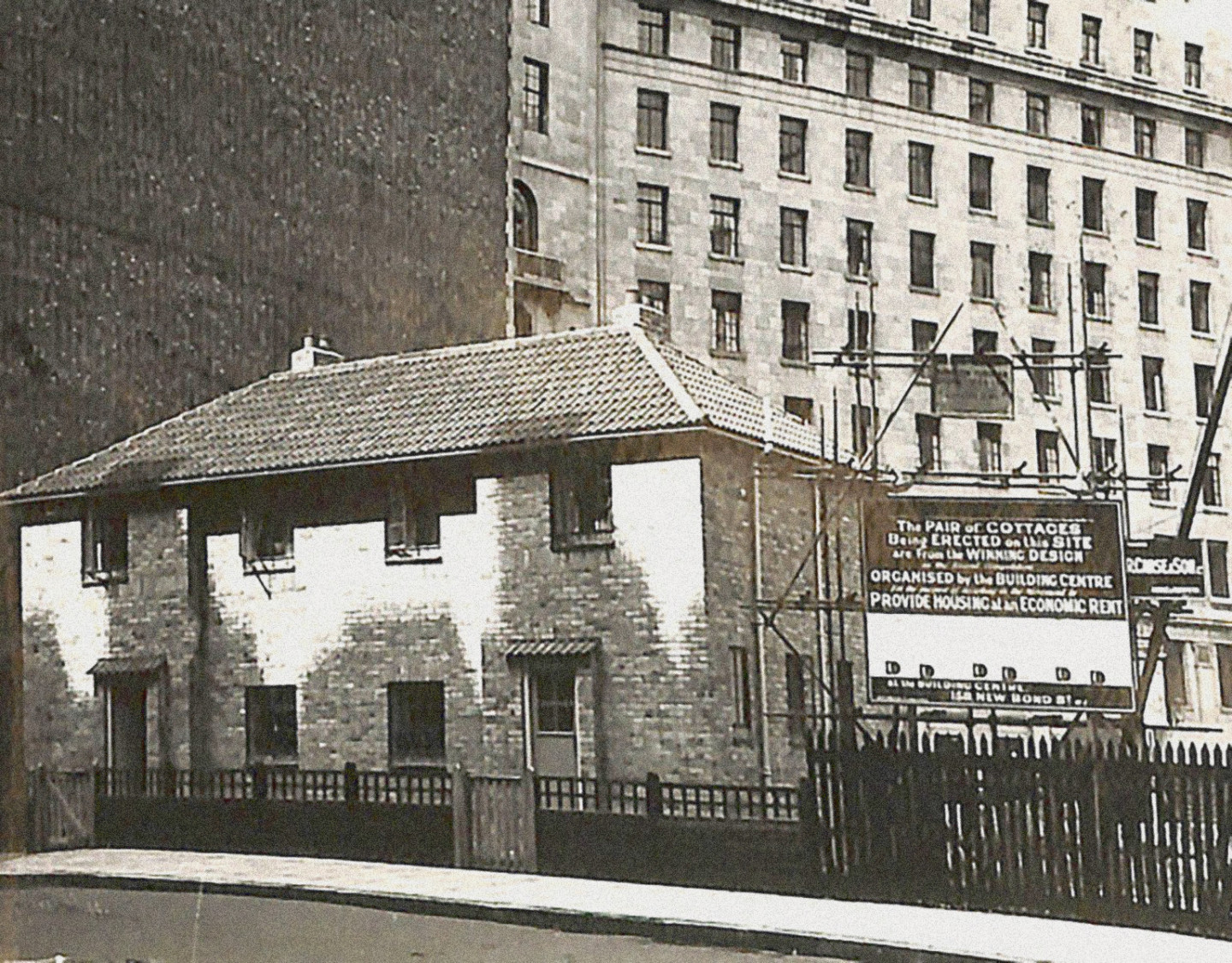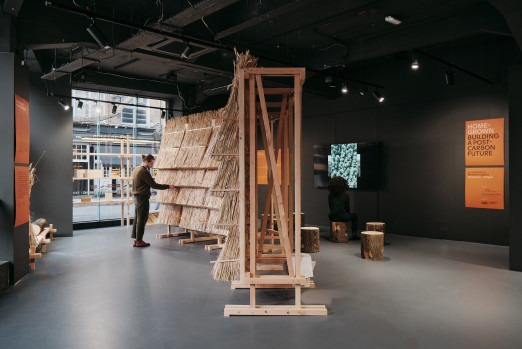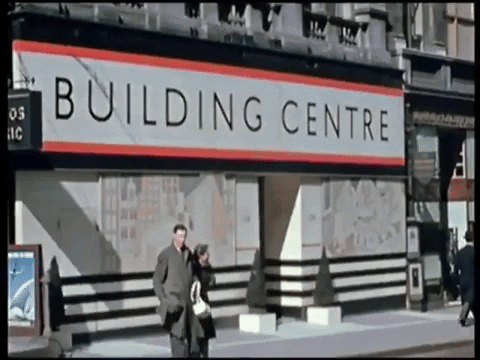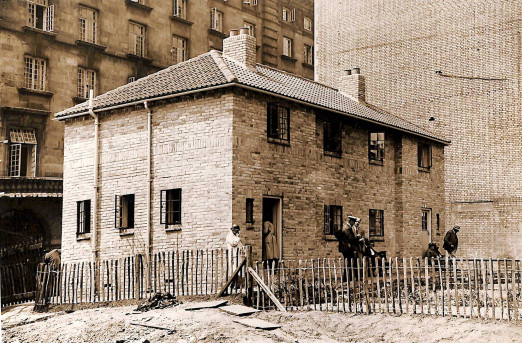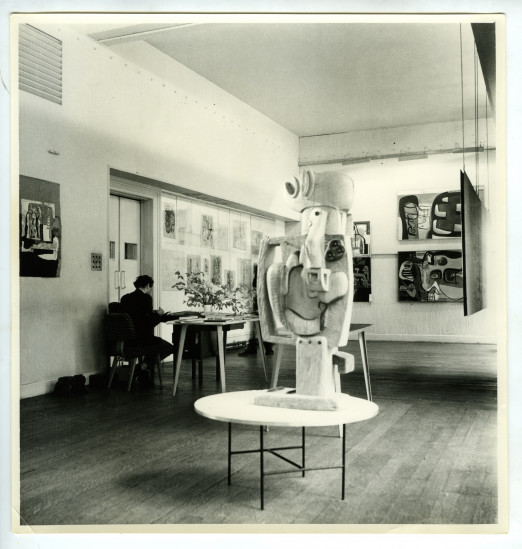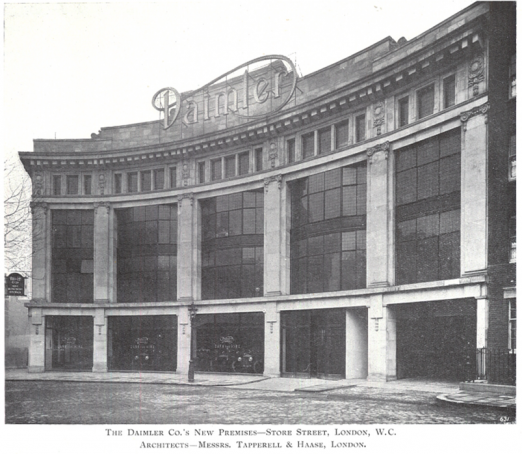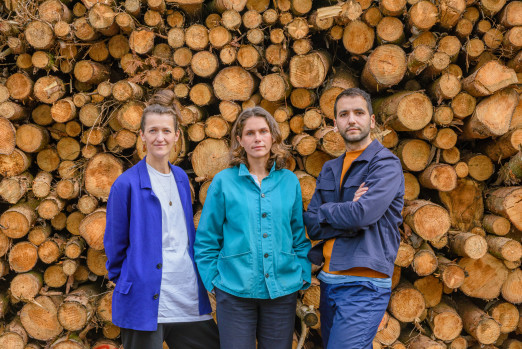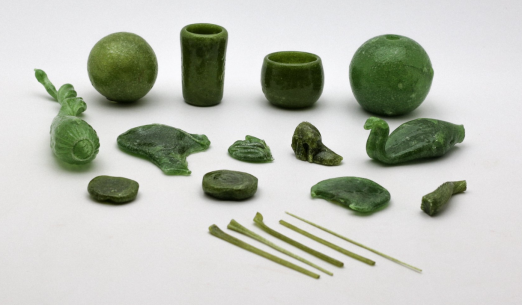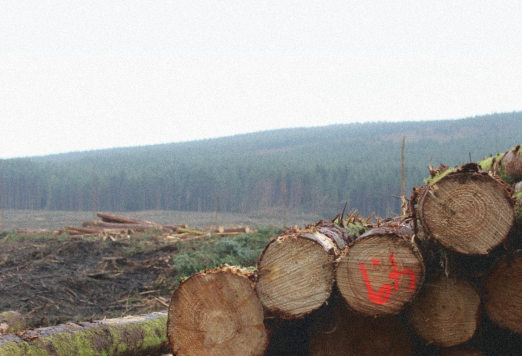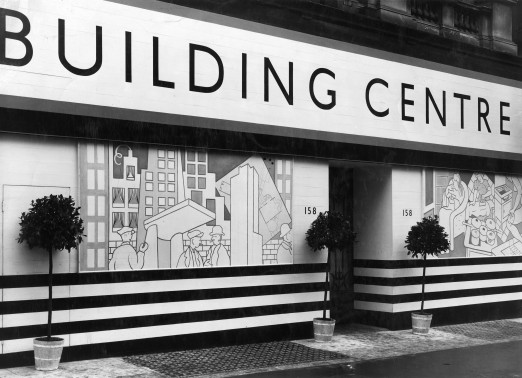This article first appeared in the Landscape Journal, published by the Landscape Institute who were media partners for Homegrown: Building a Post-carbon Future'
In 1925, the architect George Grey Wornum asked Frank Yerbury, then secretary of the Architectural Association, for space in the school's basement to show a client for whom he was designing a house three brick samples. The client left but the bricks stayed, with materials added to form a growing collection. The materials bureau became a resource for the school's students, flourishing until it became apparent that a larger space was needed. The Building Centre was born. 158 New Bond Street became the Building Centre's first home and where it opened its doors to the public on Wednesday 7 September 1932.
Frank Yerbury became the first Managing Director and held the ambition that the Centre would connect the world of manufacturing with the practice of architecture, with the aim of demonstrating the best contemporary products and materials available. In a unique offering, the Centre urged visitors to 'discover here how to create useful and beautiful structures' with products displayed in sections ranging from floor coverings to glass. Yerbury was a passionate advocate for new architecture. It's easy to trace his influence in the early output of the Building Centre. A 1936 exhibition 'Women in Architecture' made manifest Yerbury's intention that the Building Centre should use its platform to expand further discussion and inclusion in the profession. An enthusiastic photographer, Yerbury was one of the first to publish photographs of the work of Le Corbusier in the UK. In 1959, Yerbury was able to share his admiration for the architect with an exhibition first shown at the Walker Art Gallery, in Liverpool. The show featured models, drawings and photographs of works by Le Corbusier. In just five weeks, over 37,000 people visited the exhibition at the Centre.
Materials use was central to the Centre's output. An ambitious early project saw the Centre secure support from the Prince of Wales to launch a low-cost housing competition that asked entrants to design threebedroom cottages. The winning proposal by one Mr N.E Leeson was built in London's Aldwych, with the pair of brick cottages visited by over 20,000 people before being closed in September 1933. In response to the project's success, the Building Centre introduced a low-cost housing section in its materials library. In 1937, Yerbury stated:
"The basis of the Centre must always be an Exhibition of Materials and the policy should be that only such things are shown are of value to the building industry."
During the decades that followed, the Building Centre expanded its materials library, with the intention of appealing to both a professional audience and the public
Yerbury understood the need to see and touch materials to best understand their role in the built environment. In my four-year tenure as Creative Director at the Building Centre, the public programme created a platform for contemporary architecture's leading practitioners to showcase materials that are both beautiful and sustainable. Commissioning and curating a series of exhibitions focusing on the materials that make up our built environment referenced and honoured Yerbury's intention that the Centre would exist to 'stimulate public interest in building'.
The public programme became a place to see, learn and discover more about how best to responsibly make our built environment. In 2019, 'Forest of Fabrication - dRMM: pioneers of timber architecture' demonstrated the possibilities of modern timber construction through the lens of Stirling Prize-winning architectural practice dRMM. The exhibition featured twenty-four of dRMM's projects that pushed design boundaries through their exploration of the opportunities and challenges of timber structures. The show had a second iteration at RIBA North in Liverpool.
'The New Stone Age' exhibition of 2020 - featured in the Landscape Journal of the same year - shone a light on stone's serious sustainability credentials. With the ability to reduce a project's embodied carbon by an incredible 90% compared to typical steel or concrete frames, 'The New Stone Age' was a celebration of structural stone, of its potential and beauty as well as its inherent sustainability. Curated by Amin Taha of Groupwork, Steve Webb of Webb Yates and Pierre Bidaud from The Stonemasonry Company Ltd, the exhibition surveyed the contemporary use of structural stone, helping to become a catalyst in the conversation about stone.
More than ever, there is a pressing need for the materials that make up our built environment to adhere to best practice with regard to environmental impact, labour issues and transparency of the supply chain. The new show I have commissioned at the Building Centre is: 'Homegrown: Building a Post Carbon Future'. This features three specially commissioned films made by Material Cultures, reimagining how we use land at a local, regional and national scale. Material Cultures' brilliant and timely investigations into how material and industrial cultures shape our world are more relevant than ever. A not-for-profit organisation led by Summer Islam, Paloma Gormley and George Massoud, Material Cultures' work aims to demonstrate that low-carbon local materials can be more affordable and durable than globally-sourced, petrochemicalderivative materials.
Material Cultures note that our fertile landscape is constrained by pressures from farming, woodland and housing, all of which need reimagining as we move into a post-carbon future. 'Homegrown' asks how we can critically reassess our relationship with the built environment by engaging with our landscape and its materials holistically. The project explores the relationship between materials and supply chains and addresses the opportunity and potential of locally grown, plant-based construction materials that are cultivated across the UK. Reorientating the construction economy towards plant-based materials is going to be critical to transforming the industry for a post-carbon-built environment. Uniquely, this exhibition exposes the consequences of the biobased material supply chains that exist today, envisioning how they might impact our landscapes, cultures of building and ways of organising.
The exhibition presents a holistic view of sustainable construction, rethinking our relationship to each other and our landscapes. In a nod to the Building Centre's origins, Homegrown displays a miniature materials library of UK-grown biomaterials alongside those made with agricultural waste from UK farms or waste by-products of national industry. Climate change and the awareness that our planet's resources are finite necessitate a radical shift in thinking. Were Frank Yerbury here today, I imagine he would be concerned about the challenges of the climate emergency and aware of the vital role materials play in building a better and fairer future for us all.
Vanessa Norwood is a curator, writer and consultant, and was the Building Centre's Creative Director from 2018 to 2022.
